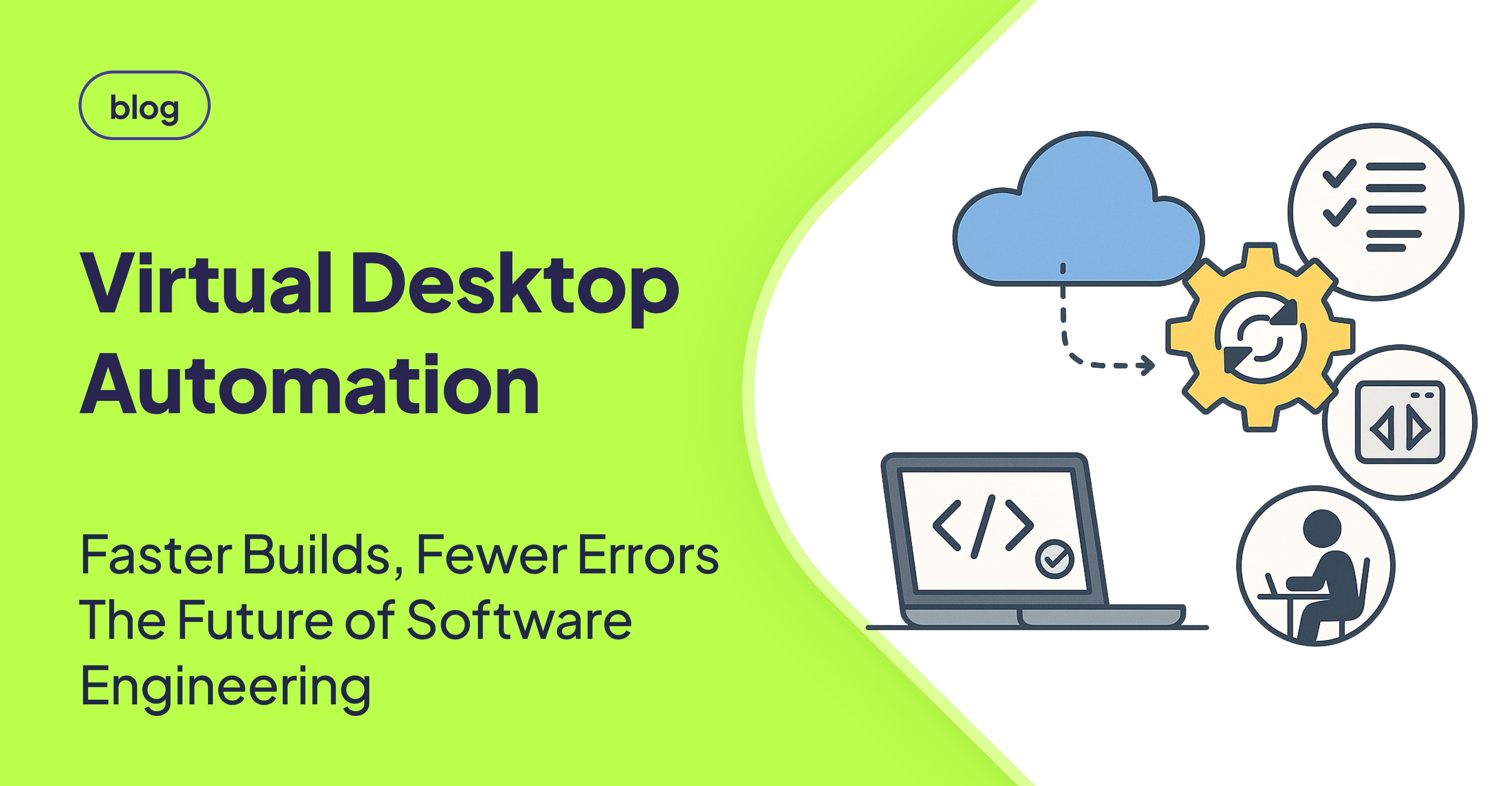TLDR
Virtual desktop automation dramatically improves workflow efficiency by automating environment setup, providing secure remote access, enabling built-in automated testing, ensuring centralized data security, and optimizing IT costs. This makes it an ideal solution for modern hybrid and distributed teams aiming for rapid, reliable software delivery.
Introduction
In today's fast-paced tech landscape, the ability to quickly configure and deploy environments is crucial. Virtual desktops provide a powerful solution, allowing teams to rapidly create and replicate identical workspaces, thereby automating repetitive setup and QA tasks. By streamlining these processes, virtual desktops free up valuable time and resources, enabling developers and QA professionals to focus on innovation and quality.
The Foundation of Stability
Automated Environment Setup
Virtual desktop automation eliminates the need for manual configuration, significantly reducing errors and saving valuable time. [STAT: Studies show that automated environment setup can reduce configuration time by up to 80%.] With pre-configured templates and scripts, spinning up development, testing, and production environments can be achieved in minutes, ensuring consistency and reliability across all stages of the software development lifecycle.
Remote Accessibility: The Key to Flexibility
Virtual desktops offer a consistent and secure work environment accessible from anywhere with an internet connection. Whether team members are working from home, in the office, or traveling, they can access the same configurations and tools, ensuring continuity and maintaining productivity. This capability is particularly beneficial for distributed teams that need to collaborate seamlessly, regardless of location.
Building Resilient Workflows
Integrated Automated Testing
Virtual desktops facilitate integrated automated testing, enabling continuous integration and continuous delivery (CI/CD) pipelines without the complexities of local setups. Regression suites can be automated to identify bugs early in the development cycle, minimizing disruptions and ensuring higher quality software releases. [STAT: Companies implementing automated testing see a 30% reduction in bug-related costs.] This proactive approach saves time, resources, and ultimately, improves the overall quality of the software.
Centralized Security Measures
With virtual desktops, sensitive data remains secure within the centralized environment, mitigating the risks associated with storing data on personal devices. Encryption, centralized patching, and detailed audit logs enhance security and facilitate compliance with industry regulations. [STAT: Data breaches cost companies an average of $4.24 million, making centralized security solutions crucial.] This robust security posture protects valuable assets and builds trust with stakeholders.
Cost Efficiency in Action
Virtual desktops offer a cost-effective alternative to traditional hardware setups. Organizations pay only for the resources they consume, avoiding the expense of underutilized hardware. Powerful GPUs can be spun up for resource-intensive tasks and then shut down, optimizing resource allocation and reducing costs. [STAT: Companies can reduce IT costs by up to 40% by switching to virtual desktop infrastructure.] This flexible resource allocation model enables organizations to scale their IT infrastructure according to their specific needs, maximizing efficiency and minimizing waste.
Use Cases: Real-World Applications
Virtual desktops have a wide range of applications, including:
- Streamlined QA: Automate QA processes to catch bugs early and improve software quality.
- Enhanced CI/CD: Integrate virtual desktops with CI/CD pipelines for seamless deployment.
- Secure Data Management: Ensure data security with centralized storage and access controls.
Addressing Common Concerns
- Migration Time: Teams can typically migrate to virtual desktops in 2-4 weeks, scaling org-wide in subsequent sprints.
- Relevance for Small Teams: Startups and growing remote teams benefit significantly from virtual desktops by avoiding costly local hardware investments.
Conclusion
Virtual desktop automation revolutionizes workflows by providing automated environment setup, secure remote accessibility, integrated automated testing, enhanced centralized security, and significant cost efficiencies. It's a future-proof foundation for developers, QA managers, and anyone focused on rapid software delivery, offering immediate benefits and long-term value in today's dynamic business environment.
FAQ
How quickly can a team migrate to a virtual desktop environment?
Migration timelines vary depending on the complexity of the existing infrastructure and the size of the team. However, a typical team can expect to migrate to virtual desktops in approximately 2-4 weeks, with organization-wide scaling occurring in subsequent sprints.
Is virtual desktop automation beneficial for small teams and startups?
Yes, startups and smaller remote teams can significantly benefit from virtual desktops. They avoid the capital expenditure of expensive local hardware, reduce IT management overhead, and enjoy the same robust security and automation features as larger enterprises.
What kind of security measures are in place with virtual desktops?
Virtual desktops provide centralized security, including encryption, centralized patching, and detailed audit logs. This centralized approach minimizes the risk of data breaches and facilitates compliance with industry-specific regulations.
Can virtual desktops be used for resource-intensive tasks like video editing or machine learning?
Yes, virtual desktops can be configured with powerful GPUs to handle resource-intensive tasks such as video editing, 3D rendering, and machine learning. These powerful resources can be spun up as needed and then shut down, optimizing resource allocation and minimizing costs.
How does automated testing within virtual desktops improve software quality?
Virtual desktops enable integrated automated testing as part of the CI/CD pipeline, allowing for earlier detection of bugs and defects. This proactive approach reduces the time and resources spent on fixing issues later in the development cycle, leading to higher quality software releases.
